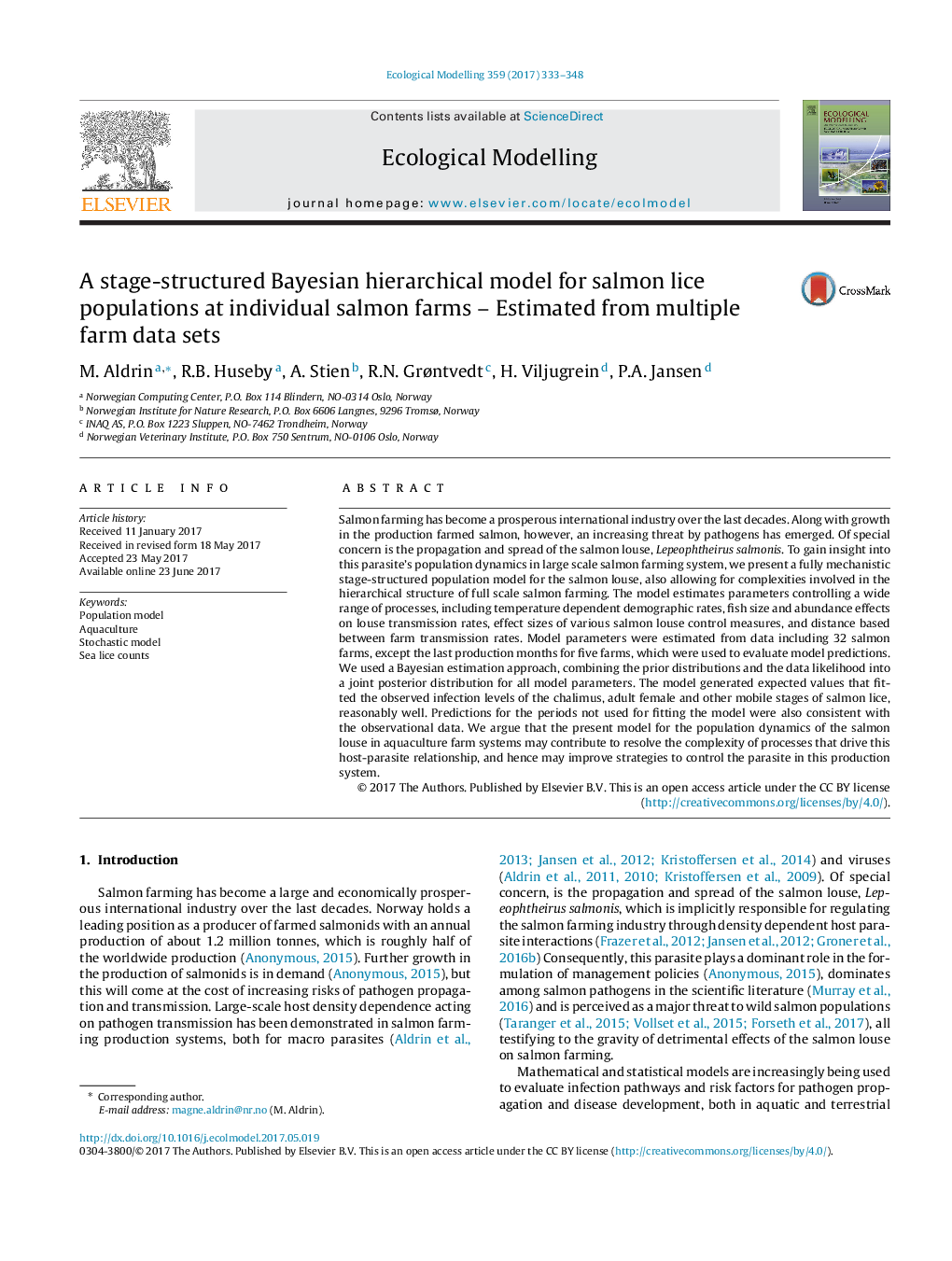| کد مقاله | کد نشریه | سال انتشار | مقاله انگلیسی | نسخه تمام متن |
|---|---|---|---|---|
| 5742145 | 1617388 | 2017 | 16 صفحه PDF | دانلود رایگان |
- We present a mechanistic, stage-structured population model for salmon lice.
- All model parameters are estimated from full scale production data.
- The model may be used for estimation of biological parameters and of treatment effects, prediction and scenario simulation.
Salmon farming has become a prosperous international industry over the last decades. Along with growth in the production farmed salmon, however, an increasing threat by pathogens has emerged. Of special concern is the propagation and spread of the salmon louse, Lepeophtheirus salmonis. To gain insight into this parasite's population dynamics in large scale salmon farming system, we present a fully mechanistic stage-structured population model for the salmon louse, also allowing for complexities involved in the hierarchical structure of full scale salmon farming. The model estimates parameters controlling a wide range of processes, including temperature dependent demographic rates, fish size and abundance effects on louse transmission rates, effect sizes of various salmon louse control measures, and distance based between farm transmission rates. Model parameters were estimated from data including 32 salmon farms, except the last production months for five farms, which were used to evaluate model predictions. We used a Bayesian estimation approach, combining the prior distributions and the data likelihood into a joint posterior distribution for all model parameters. The model generated expected values that fitted the observed infection levels of the chalimus, adult female and other mobile stages of salmon lice, reasonably well. Predictions for the periods not used for fitting the model were also consistent with the observational data. We argue that the present model for the population dynamics of the salmon louse in aquaculture farm systems may contribute to resolve the complexity of processes that drive this host-parasite relationship, and hence may improve strategies to control the parasite in this production system.
Journal: Ecological Modelling - Volume 359, 10 September 2017, Pages 333-348
